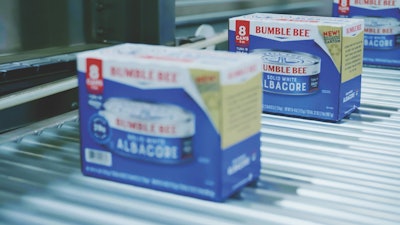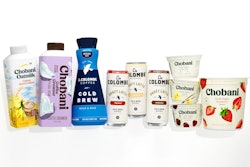A new study by Transparency Market Research forecasts canned tuna sales to expand at a CAGR (compound annual growth rate) of 4.9% between 2023 and 2031, reaching $13.8 billion by the end of 2031. The canned tuna market was valued at $8.9 billion in 2022.
The study notes that the food industry—using canned tuna as one example—is increasingly focused on sustainable packaging, so the creation of eco-friendly packaging may be an effective way for companies to reduce their environmental impact while meeting consumer demands at the same time.
In addition to sustainable packaging, more thoughtful, humane fishing methods for sourcing can also contribute to the sustainability of canned tuna. These elements reflect current consumer preferences, and can influence the types of canned tuna products that become popular in the future, as part of a continued evolution for convenience foods overall.
 | Take a look inside a 2023 Manufacturing Innovation Award -winning plant in this video short. |
Here are some other key findings in the report:
- Based on species type, yellowfin tuna is expected to create a market for canned tuna in the coming years.
- The retail sector is likely to drive the demand for canned tuna in the market until 2031.
- A substantial increase in canned tuna sales is expected in supermarkets.
- The increased demand for private label products provides manufacturers with new opportunities in the canned tuna market.
- North America held the largest share of the global canned tuna market as of 2022.
The report adds that several prominent tuna producers—Bumble Bee, Wild Planet, Star Kist, Chicken of the Sea, and others—already emphasize ethical sourcing and sustainability in their product lines due to consumer concerns about overfishing. Manufacturers are also investing heavily in packaging innovations as well to improve the shelf life of canned tuna and appeal to consumers' desire for convenience.
Market growth drivers
The report notes that health-conscious consumers are increasingly seeking low-fat, protein-rich foods. The omega-3 fatty acids and lean proteins found in canned tuna make it a top option for health-conscious consumers. As a convenient and portable food option, canned tuna is popular for quick snacks and meals, so tuna in canned form is convenient for busy lifestyles, helping its popularity in the marketplace.
Compared to fresh tuna, canned tuna has a long shelf life, making it a convenient storage option for emergencies without compromising quality. Increasing international trade has led to increased availability of tuna species from various regions. In turn, this diversification has made canned tuna more appealing to consumers and contributed to the market's growth.
Because of packaging innovations like easy-open lids and pouches, canned tuna has increasingly become more convenient and accessible. Product differentiation is also made possible by packaging innovations, which appeal to a wider audience and allow people to choose where and how they eat tuna. As mentioned earlier, sustainable food choices and their environmental impact are increasingly important to consumers. Sustainable tuna brands can gain a competitive edge by fishing with pole and line and dolphin-safe techniques.
Dolphin-safe sourcing
The report mentions that North America is expected to see a rise in canned tuna consumption in the coming years. Consumers in North America are becoming more focused on health, making canned tuna a ready-to-eat option as a protein source. With the growing global population and more people using ready-to-eat and canned items, the worldwide market is also expected to grow significantly in the coming years.
As for sourcing, several conditions must be met for tuna products in the U.S. to be labeled as dolphin-safe under the Dolphin Protection Consumer Information Act, implemented by NOAA Fisheries. As part of U.S. regulations and laws concerning tuna fishing operations, this labeling has been formulated to demonstrate compliance, and is displayed for consumers on labels by brands that have been certified as dolphin-safe.

























